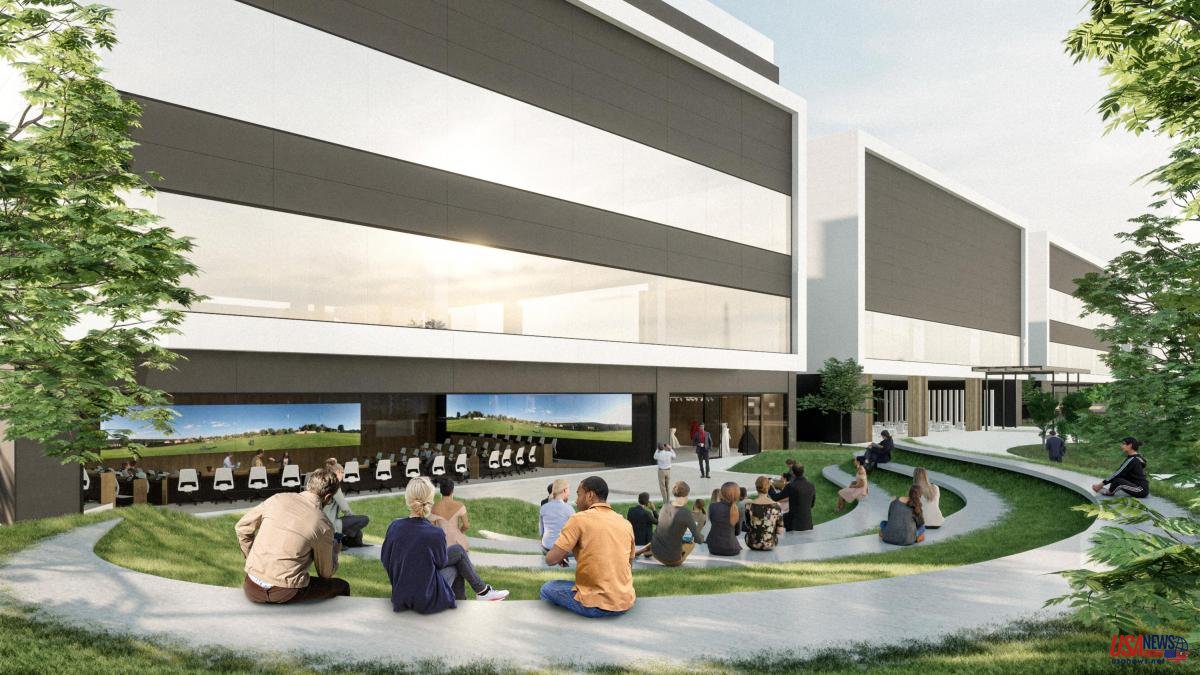Mango has accelerated the construction of its new headquarters, in Palau-solità i Plegamans, with the aim of inaugurating the complex in 2024 and thus accompanying the growth that the company foresees for the coming years.
The group led by Toni Ruiz has invested 42 million euros to build its new campus, which will house 2,200 employees and which will connect with the Parque de l'Hostal del Fum, a natural environment of more than 22.5 hectares, the equivalent of more of 22 soccer fields.
During the second half of 2022, Mango has received the works permit and has begun construction of the structural part of its new complex, dividing the process into different lots (infrastructures, facilities, pavements...), 80% of which are already have been tendered and awarded to different suppliers.
For the overall conception and design of the project, it has had the collaboration and advice of the architecture firms CGA Architects and Cotecno, with offices in Barcelona and A Coruña, respectively, which work together on executive development and construction management. For the specific development of landscaping, the company has had the collaboration of the specialist company AELAND.
Ruiz describes the construction of the new headquarters as a "milestone in the history of Mango". “On the one hand, the new open and modern workspace will be the engine of change towards a new, more flexible and collaborative work system for our employees. On the other hand, the inauguration of the Campus will mean the perfect commemoration of the company's fortieth anniversary”, comments the CEO.
The new headquarters will be made up of two office buildings interconnected by a green area of gardens and walkways that will house multiple work spaces for the different areas and activities of the company: design, clothing, samples, catalogues, photographic sets...
It will also have a business center with almost 25 meeting rooms and four multipurpose rooms, two cafeterias with a dining room, an auditorium with capacity for more than 200 people, a wellness center with a gym, several showrooms, five pilot stores, an outdoor agora, green areas and a relaxation space and chill-out terrace on the roof of one of its buildings with capacity for up to 300 people, in the style of Silicon Valley technology corporations.
The outdoor areas and their landscaping will extend throughout the campus, as well as in the outdoor and indoor patios where people can go out to work, including the walkable roof. In addition, the company will apply the concept of rewilding beauty in its gardens whereby native species will predominate, even incorporating existing species from before the construction of the building.
The current Campus Mango project was approved in 2020 by Mango, in the context of a global pandemic, and with the aim of providing the company with a new headquarters, a new corporate culture and creating a new way of working for its teams. The complex will also follow sustainability criteria.
According to the company, the future headquarters and the conceived design aim to promote a new, more collaborative and innovative way of working. "The flexible, open and inclusive spaces are designed to promote teamwork and community creation, while promoting the well-being of all the company's employees with an integrated culture," they point out.
The walkways that connect various areas of the buildings and cross the landscaped patios will promote, along with the main corridors, relationships between departments. Likewise, to promote labor flexibility, the offices will have a wide variety of workstation environments, with open meeting tables, informal meeting areas, closed meeting rooms, phone booths, and spaces for individual concentration.













